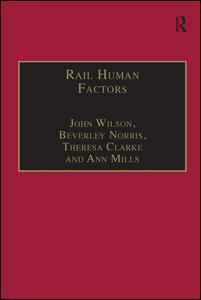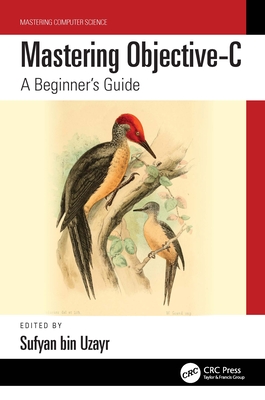图书简介
Rail Human Factors includes contributions from leading ergonomists, psychologists, sociologists, management scientists and engineers whose common theme is to investigate, understand and design for people on the railways, including staff, passengers and the general public. The book is the definitive guide for all those concerned with making railways safer, more reliable, high quality and efficient. It is essential reading for policy-makers, researchers and industry around the world.
Contents: Foreword, Andrew McNaughton. Introduction, John R. Wilson, Beverley J. Norris, Theresa Clarke, Ann Mills. Perspectives on Rail Human Factors: Rail human factors: past, present and future, John R. Wilson and Beverley J. Norris; The RSSB human factors programme, Ann Mills; The ergonomics programme at Network Rail, Theresa Clarke. Driving – Train Driver Behaviour: Driver performance modelling and its practical application to railway safety, W. Ian Hamilton and Theresa Clarke; Acting or reacting? a cognitive work analysis approach to the train driver task, Anders Jansson, Eva Olsson and Lena Kecklund; The role of the future train driver, Susannah Russell and Barbara Long; Investigating train driver behaviour: the use of lineside information when regulating speed, Trudi Farrington-Darby, John R. Wilson and Beverley J. Norris; Analyzing and modelling train driver performance, Ronald McCleod, Guy H. Walker, Neville Moray and Ann Mills. Driving – Vision and Visual Strategies: a methodology to investigate train driver visual strategies, N. Brook-Carter, A.M. Parkes and Ann Mills; A structured framework for integrating human factors design principles into railway vehicle cab sightlines specification, Paul Traub and William Lukau. Driving – Devices in the Cab: Assessing the human factors risks in extending the use of AWS, Ronald W. McLeod, Guy H. Walker and Ann Mills; Driver vigilance devices, Adam Whitlock, John Pethick and Ann Mills; Human factors issues raised by the proposed introduction of GSM radio telecommunications into the UK rail environment, Mark Young and James Jenkinson. Driving – Signs, Signals and SPADs: Driver detection and recognition of lineside signals and signs at different approach speeds, Guangyan Li, W. Ian Hamilton, Ged Morrisroe and Theresa Clarke; Signal sighting – development of a framework for managing conflicting requirements, Nicola Stapley, Tidi Wisawayodhin and Ann Mills; Ergonomics relating to the migration of lineside signals to ETCS L2 cab signals, D.P. Rookmaaker, D.W. de Bruijn, C.E. Weeda, M.P.H.J. Koedijk, J.L. Zwartenkot; A human factors SPAD checklist, Emma Lowe and Claire Turner: A structured method for integrating human factors into SPAD risk assessment. Driving – Fatigue: Human friendly rosters: reducing the risk of fatigue, Rebecca Ashton and Abigail Fowler; The HSE revised fatigue index in the rail industry: from application to understanding, Rob Cotterill and Helen Jones. Signalling and Control Facilities: Meeting human factors challenges during the design of the new Integrated Electronic Control Centre (IECC) in York, Mike Stearn, Martin Hazell, John Robinson and Steve McLeod; The application of ergonomics to standards development for VDU-based signalling control systems, Anthony Slamen and Nick Coleman; Using visual layering methods to design rail network control room displays, Darren Van Laar, Ian Andrew and Matthew Cox; Baseline ergonomic assessment of signalling control facilities, Mike Stearn, Theresa Clarke and John Robinson; Photo biological lighting: an avenue for maintaining alertness, Martin Reid and Martin Barnes. Planning and Control: Analysis and support of planning in the Dutch Railroad Company, René Jorna, Wout van Wezel, Derk Jan Kiewiet and Thomas de Boer; Future train traffic control: control by re-planning, Arvid Kauppi, Johan Wikström, Peter Hellström, Bengt Sandblad and Arne W. Andersson. Workload in Signalling: Understanding of mental workload in the railways, John R. Wilson, Laura Pickup, Beverley J. Norris, Sarah Nichols, Lucy Mitchell; A conceptual framework of mental workload and the development of a self-reporting integrated workload scale for railway signallers, Laura Pickup, John R. Wilson, Sarah Nichols and Stuart Smith; Assessment of new workload tools for the rail industry, Lucy Mitchell, Laura Pickup, Shelley Thomas and David Watts; Application of industrial strength workload assessment tools, Ged Morrisroe. Human Reliability and Safety Culture: Human error risk management methodology for safety audit of a large railway organization, P.C. Cacciabue; Competence management systems for rail engineering organizations, John Baker; The analysis of human communication errors during track maintenance, W.H. Gibson, E.D. Megaw, Mark Young and E. Lowe; Understanding safety culture and strategies for improvement in railway maintenance, Trudi Farrington-Darby, Laura Pickup, John R. Wilson and Lucy Adams; Cross-border railway operations: building safety at cultural interfaces, S. O. Johnsen, I. A. Herrera, J. Vatn and R. Rosness. Incident Reporting: The development of PRISMA-Rail: a generic root cause analysis approach for the railway industry, Tjerk W. van der Schaaf and Linda B. Wright; CIRAS – history and issues arising during development, Maurice Wilsdon and Helen Muir; Near miss versus accident causation in the UK railway industry, Linda B. Wright and Tjerk W. van der Schaaf. Passengers and Staff: Managing violence, Claire Dickinson and Jeremy Bevan; The role of the manager in stress management, Emma Lowe; Getting passengers out – evacuation behaviours, Louis C. Boer; Rail passenger perceptions of risk and safety and priorities for improvement, Lauren J. Thomas, Daniel J.A. Rhind and Katie J. Robinson; A common system of passenger safety signage, Gary Davis and Ann Mills. Human Factors Integration: Human factors within LUL – history, progress and future, Simon Pledger, Caroline Horbury and Andy Bourne; Human factors integration – a company case study, Sarah D. Garner; Ergonomics standards in the UK rail industry, John Wood; Task specification in designing for human factors in railway operations, Andrew Shepherd and Edward Marshall; Systems engineering tools for task modelling, Ged Morrisroe; Index.
Trade Policy 买家须知
- 关于产品:
- ● 正版保障:本网站隶属于中国国际图书贸易集团公司,确保所有图书都是100%正版。
- ● 环保纸张:进口图书大多使用的都是环保轻型张,颜色偏黄,重量比较轻。
- ● 毛边版:即书翻页的地方,故意做成了参差不齐的样子,一般为精装版,更具收藏价值。
关于退换货:- 由于预订产品的特殊性,采购订单正式发订后,买方不得无故取消全部或部分产品的订购。
- 由于进口图书的特殊性,发生以下情况的,请直接拒收货物,由快递返回:
- ● 外包装破损/发错货/少发货/图书外观破损/图书配件不全(例如:光盘等)
并请在工作日通过电话400-008-1110联系我们。
- 签收后,如发生以下情况,请在签收后的5个工作日内联系客服办理退换货:
- ● 缺页/错页/错印/脱线
关于发货时间:- 一般情况下:
- ●【现货】 下单后48小时内由北京(库房)发出快递。
- ●【预订】【预售】下单后国外发货,到货时间预计5-8周左右,店铺默认中通快递,如需顺丰快递邮费到付。
- ● 需要开具发票的客户,发货时间可能在上述基础上再延后1-2个工作日(紧急发票需求,请联系010-68433105/3213);
- ● 如遇其他特殊原因,对发货时间有影响的,我们会第一时间在网站公告,敬请留意。
关于到货时间:- 由于进口图书入境入库后,都是委托第三方快递发货,所以我们只能保证在规定时间内发出,但无法为您保证确切的到货时间。
- ● 主要城市一般2-4天
- ● 偏远地区一般4-7天
关于接听咨询电话的时间:- 010-68433105/3213正常接听咨询电话的时间为:周一至周五上午8:30~下午5:00,周六、日及法定节假日休息,将无法接听来电,敬请谅解。
- 其它时间您也可以通过邮件联系我们:customer@readgo.cn,工作日会优先处理。
关于快递:- ● 已付款订单:主要由中通、宅急送负责派送,订单进度查询请拨打010-68433105/3213。
本书暂无推荐
本书暂无推荐













